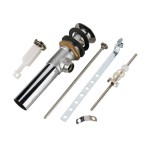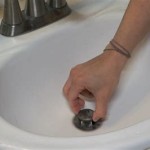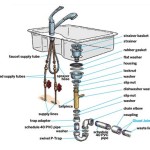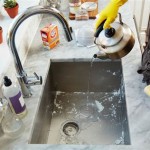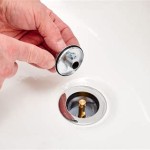Whirlpool Under Sink Replacement Water Filters: A Comprehensive Guide
Whirlpool under sink replacement water filters play a vital role in maintaining the quality and safety of drinking water. These filters are designed to remove contaminants, improve taste, and ensure a clean and healthy water supply directly from a dedicated tap in the kitchen or bathroom. Understanding the different types of Whirlpool filters available, their functionality, and the replacement process is essential for homeowners seeking optimal water filtration.
The purpose of an under sink water filter system extends beyond simply improving taste. Many municipal water supplies, while treated, can contain trace amounts of chemicals, sediment, and other impurities that can affect the water's overall quality. Furthermore, older plumbing systems may introduce contaminants like lead, which poses significant health risks. Whirlpool under sink filters provide an additional layer of protection, addressing these concerns and providing a reliable source of purified water.
This article provides a detailed overview of Whirlpool under sink replacement water filters, covering their various types, benefits, installation procedures, troubleshooting common issues, and factors to consider when selecting the right filter for individual needs. This information aims to empower homeowners to make informed decisions regarding their water filtration systems and ensure a consistently clean and safe water supply.
Understanding the Types of Whirlpool Under Sink Replacement Water Filters
Whirlpool offers a range of under sink replacement water filters, each designed to target specific contaminants and address different water quality concerns. Identifying the type of filter required for a particular system is crucial for maintaining optimal performance.
Sediment Filters: These filters are designed to remove particulate matter such as sand, silt, rust, and other sediments from the water supply. Sediment filters act as a pre-filter, protecting downstream filters from clogging and extending their lifespan. They are typically constructed from spun polypropylene or pleated paper and are rated by micron size, indicating the size of particles they can effectively remove. A lower micron rating signifies a finer filter and greater sediment removal capability. Regular replacement of sediment filters is vital to prevent pressure drop and maintain water flow.
Carbon Filters: Carbon filters are widely used for their ability to remove chlorine, chloramine, volatile organic compounds (VOCs), and other chemicals that contribute to unpleasant taste and odor. There are two main types of carbon filters: activated carbon and carbon block. Activated carbon filters use granular activated carbon (GAC) to adsorb contaminants, while carbon block filters use a compressed block of carbon, providing a larger surface area and potentially higher contaminant removal efficiency. Carbon filters are effective in improving the aesthetic qualities of water and reducing health risks associated with certain chemical contaminants.
Lead Reduction Filters: These specialized filters are designed to remove lead, a heavy metal that can leach into water from older plumbing systems. Lead exposure can cause serious health problems, particularly in children and pregnant women. Lead reduction filters typically use a combination of activated carbon and other media, such as ion exchange resins, to effectively capture and remove lead particles from the water. These filters are essential for homes with older plumbing infrastructure and those concerned about potential lead contamination.
Reverse Osmosis (RO) Membranes: While technically not a filter in the traditional sense, reverse osmosis membranes are a crucial component of RO under sink water filtration systems. RO membranes use a semi-permeable membrane to separate water molecules from dissolved salts, minerals, and other contaminants. They are highly effective in removing a wide range of impurities, including fluoride, arsenic, nitrates, and pharmaceuticals. RO systems typically include pre-filters and post-filters to protect the membrane and further improve water quality. Replacement of the RO membrane is necessary every 2-5 years, depending on water quality and usage.
It's crucial to consult the Whirlpool user manual for the specific under sink water filtration system to determine the correct type of replacement filter required. Using the wrong filter can compromise the system's performance and potentially reduce its effectiveness in removing contaminants.
Key Benefits of Using Whirlpool Under Sink Replacement Water Filters
Installing and maintaining a Whirlpool under sink water filtration system offers numerous benefits, ranging from improved water quality to cost savings compared to bottled water. These benefits make it a worthwhile investment for homeowners seeking a reliable and convenient source of purified water.
Improved Water Quality: The primary benefit of using Whirlpool under sink water filters is the significant improvement in water quality. These filters effectively remove a wide range of contaminants, including sediment, chlorine, lead, VOCs, and other impurities. This results in cleaner, clearer, and better-tasting water that is safer for drinking, cooking, and other household uses.
Enhanced Taste and Odor: Chlorine and other chemicals commonly used in water treatment can impart an unpleasant taste and odor to tap water. Carbon filters effectively remove these chemicals, resulting in a noticeable improvement in the taste and smell of the water. This makes drinking water more palatable and encourages greater hydration.
Cost Savings: Over time, using an under sink water filtration system can result in significant cost savings compared to purchasing bottled water. Bottled water can be expensive and contributes to plastic waste. An under sink filter provides a continuous supply of purified water at a fraction of the cost, making it a more economical and environmentally friendly option.
Convenience: Under sink water filters provide a convenient and readily available source of purified water directly from the tap. There is no need to refill pitchers or purchase bottled water. This makes it easy to stay hydrated and provides purified water for cooking and other household needs without the hassle of constantly replenishing supplies.
Environmental Benefits: By reducing the reliance on bottled water, Whirlpool under sink water filters contribute to environmental sustainability. Bottled water production and transportation consume significant energy and resources, and plastic bottles contribute to landfill waste and pollution. Using a water filter helps reduce this environmental impact.
Healthier Water: Removing contaminants like lead, chlorine byproducts, and pharmaceuticals can significantly improve the healthiness of drinking water. This is particularly important for vulnerable populations, such as children, pregnant women, and individuals with compromised immune systems. Clean, filtered water promotes overall health and well-being.
Replacing a Whirlpool Under Sink Water Filter: A Step-by-Step Guide
Replacing a Whirlpool under sink water filter is a relatively straightforward process that can be performed by most homeowners with basic plumbing knowledge. Following the manufacturer's instructions and taking necessary safety precautions is crucial to ensure a successful filter replacement.
Preparation: Before beginning the filter replacement process, gather the necessary tools and supplies. These typically include the new replacement filter, a bucket or container to catch any water spills, a wrench (if required to loosen filter housings), towels or rags to wipe up spills, and the user manual for the specific Whirlpool under sink system.
Shutting Off the Water Supply: The first step is to shut off the water supply to the filter system. Locate the shut-off valve typically located under the sink, near the filter system. Turn the valve clockwise to shut off the water flow. If there is no dedicated shut-off valve, turn off the main water supply to the house.
Releasing Water Pressure: After shutting off the water supply, release any remaining water pressure in the system. This can be done by opening the dedicated faucet for the filtered water. Allow the water to drain completely until the flow stops.
Removing the Old Filter: Depending on the filter system design, there are typically two methods for removing the old filter. Some systems use a twist-and-lock mechanism, where the filter is rotated to release it from the housing. Others use a filter housing that needs to be unscrewed. For systems with a housing, use the wrench (if needed) to carefully loosen and remove the filter housing. Be prepared for some water spillage during this process.
Inserting the New Filter: Once the old filter is removed, carefully unpack the new filter and remove any protective wrapping. Ensure that the new filter is the correct type and size for the system. Insert the new filter into the filter housing or twist-and-lock mechanism, following the manufacturer's instructions. Ensure that the filter is properly seated and secured.
Reassembling the System: If the system uses a filter housing, carefully screw the housing back onto the filter head, ensuring that the O-ring is properly seated to create a watertight seal. Tighten the housing securely, but avoid over-tightening. For twist-and-lock systems, rotate the filter until it locks into place.
Flushing the Filter: After installing the new filter, turn the water supply back on slowly. Open the dedicated faucet for the filtered water and allow the water to run for several minutes to flush the filter and remove any air or carbon fines. The water may initially appear cloudy or discolored, but this is normal and should clear up after a few minutes of flushing.
Checking for Leaks: After flushing the filter, carefully inspect the system for any leaks. Check the filter housing, connections, and faucet for drips or signs of water damage. If any leaks are detected, turn off the water supply again and tighten the connections or adjust the O-ring as needed.
By following these steps carefully, homeowners can successfully replace their Whirlpool under sink water filters and ensure a continuous supply of clean and purified water.
Proper maintenance and timely replacement of Whirlpool under sink water filters are critical for optimal performance and water quality. Regular filter changes not only ensure the effective removal of contaminants but also prolong the lifespan of the filtration system and protect the plumbing from potential damage. Adhering to the manufacturer's recommended replacement schedule ensures a consistent supply of clean, safe, and great-tasting water for the entire household.

Whirlpool Under Sink Replacement Water Filter At Com

Wheurf Main Faucet Replacement Water Filter Whirlpool

Whirlpool Under Sink Replacement Filter At Com

Whirlpool Under Sink Replacement Filter Whkf Db1 At Com

Whirlpool 2 Pack Replacement Filters For Under Sink System Wheedf Rona

Whirlpool 3 Pack Replacement Filters For Under Sink System Whembf Rona

Whirlpool Under Sink Replacement Water Filters Cartridges At Com

Wheedf Filters Replacement By Whirlpool Fast

Replace A Whirlpool Model No Whkf Dwh Under Sink Mounted Water Filter

Whirlpool Whkf Gac Activated Carbon Taste And Odor Under Sink Replacement Filter At Com

